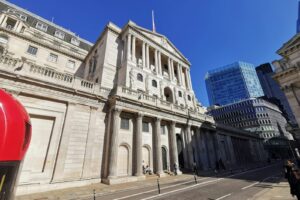Comment from the Association of Leasehold Enfranchisement Practitioners (ALEP), Katherine Simpson, Partner at Edwin Coe LLP
Commonhold was introduced in England and Wales in 2004 by the enactment of the Commonhold and Leasehold Reform Act 2002. Despite commonhold models being widespread throughout the world, it has failed to establish itself here, with fewer than 30 commonhold schemes currently existing. The publication of the white paper, The proposed new commonhold model for homeownership in England and Wales is the first step towards the government’s aim to make commonhold the default tenure, effectively eradicating leasehold.
The principle is straightforward; that flat owners should be freeholders to protect their long term interests, and so not limited by the wasting asset that is a lease. They should be allowed to manage their properties and shared spaces directly, without third party landlords who lack a personal stake in the effective management of the building and in the harmony of its residents.
If the proposals go ahead, the sale of new build flats on a leasehold structure will be banned, and the commonhold model will instead be mandatory.
The government also plans to make it easier for existing leaseholders to convert to commonhold. The current 100% of property owners in a block required to consent for conversion is intended to be reduced to 50%.
Impact on investors
Whilst the government’s reforms aim to give homeowners more control and stability, they will also create challenges for developers.
The inevitable rebalancing of power will have a significant impact on developers and investors who have already had to come to terms with the Leasehold Reform (Ground Rent) Act 2022 which abolished ground rents in all new leases, and so removing a key source of income.
Furthermore, the enactment of the Leasehold and Freehold Reform Act 2024, intended to make enfranchisement easier and cheaper, most of which is not yet in force, has had the effect of forcing developers to reconsider the parameters of new developments. The 2024 Act has increased the 25% upper limit of commercial parts to 50% so that more buildings will afford leaseholders the right to manage their building. That change is also proposed to apply to enable more leaseholders to claim the freehold interest.
Investors will need to carefully evaluate the changing landscape of property tenure. The move from leasehold to commonhold means that the traditional revenue streams associated with leasehold properties, such as ground rents and service charges, will be diminished or eradicated. For many investors, this will require a reassessment of the financial viability of residential and mixed-use developments.
Risk and return
Commonhold will change the face of investor returns currently afforded by the leasehold structure. In particular, ground rents, services charges, lease extension premiums and the potential to realise a profit on the sale of a freehold.
A developer’s influence will dwindle as new units are sold, with developers having limited decision making on management and service charges.
Moreover, the removal of the predictability of ground rents as a steady income stream may also herald a period of financial uncertainty for developers.
The transition to commonhold will necessitate a recalibration of investment strategies, with increased focus on the profitability of new unit sales against the long-term revenue that ground rents traditionally provided. It is easy to see how a two-tier property market might be an unintended consequence of the introduction of commonhold.
Commonhold as an alternative to leasehold for mixed-use developments
The existing legal framework of commonhold does not easily accommodate the diverse needs and interests of different owners, which makes commonhold an unattractive prospect for both homeowners and businesses.
The White Paper details several key changes intended to make commonhold a viable alternative to leasehold for mixed- use developments.
It addresses provision for separate heads of costs, which will complement the sections and allow for greater flexibility in budgeting. This is intended to provide a more democratic and transparent framework for the management and upkeep of the building and its facilities.
The new Code of Practice for cost apportionment in commonhold aims to improve transparency, help developers assign costs fairly from the start, and resolve related disputes or errors efficiently.
The framework will allow for business leases to be granted for commercial units within a commonhold so that developers can sell or retain these units as investments once they have been let, in the same way that they would have done in a leasehold development.
How should property investors approach the reforms?
The government is keen to ensure that developers, landlords, homeowners and residential stakeholders participate in their consultation process which is expected later this year. Their engagement is key.
Even if the government introduce a draft commonhold bill in the latter part of this year, as is proposed, it is unlikely to become law at the earliest in the latter part of 2026. The same applies to the abolition of leaseholds.
Equity, democracy, flexibility, freedom and transparency
The White Paper is principally directed at the interests of homeowners and is compelling in its message.
It does however grant developers greater rights, allowing phased sales to support effective marketing and safeguard both developer and investor interests essential to the ongoing process of high street regeneration and community development.















